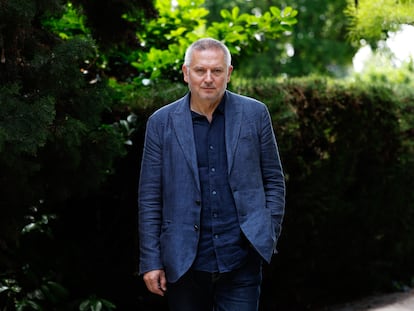Superagers: a rare group who can teach us how to grow old gracefully
These exceptional individuals maintain strong social bonds, a sense of purpose and have unique genetics that protect against dementia

Everyone gets older, but some people seem to age more slowly. This has prompted many scientists to study the factors that make some individuals seem immune to the effects of aging. The aim is to discover biological traits or lifestyle habits that can be replicated to harness their extraordinary abilities. There is a remarkable group of individuals known as “superagers” — men and women over the age of 80 with the mental faculties of people decades younger. The term was coined in 2012 by a team led by Emily Rogalski from Chicago’s Northwestern University. Researchers found that superagers have a thicker cerebral cortex, which provides resilience against age-related damages like cortical atrophy. Interestingly, their superior cognitive abilities didn’t manifest during their youth. Instead, they showed remarkable resistance to aging, possibly due to physical factors and lifestyle choices.
Lancet Healthy Longevity recently published a study that found that superagers, in addition to having better memories, move faster and have better mental health. The study utilized data from the Vallecas Project cohort, which is dedicated to identifying early markers of Alzheimer’s. By employing diagnostic imaging technologies, the study found that these individuals exhibit a higher volume of gray matter in key brain regions. This suggests a slower rate of deterioration compared to the general population, as validated by a five-year follow-up study involving superagers and normal individuals.
Marta Garo-Pascual, a co-author of the study and researcher at the Alzheimer Center of the Reina Sofía Foundation in Madrid, says these types of studies “contribute to our understanding of superagers, shedding light on whether they exhibit heightened resistance to age-related memory decline or possess mechanisms to cope with this decline more effectively compared to others.” The increased presence of gray matter suggests that individuals may have a protective factor that delays damage. Additionally, these individuals tend to have more social connections and maintain an interest in learning new things for a longer period of time. However, because observational studies like Garo-Pascual’s cannot definitively establish causation, it’s challenging to determine whether healthy habits enable them to stay youthful or if their innate youthfulness allows them to remain engaged and connected with the latest innovations.
Emily Rogalski, who blazed the trail for studying superagers a decade ago, acknowledges that these extraordinary individuals are indeed hard to find and defy easy classification. Some possess a brain structure that showcases remarkable resilience against neuropathologies, while others demonstrate resilience by navigating alternative pathways despite experiencing damage. Rogalski says that life experiences may carry as much weight as genetic factors in this intricate equation.
Professor David Bartrés of the University of Barcelona said: “The study of superagers is valuable as it enables us to identify distinguishing characteristics in these individuals and promote them among the general population. Through these studies, we have gained insights into modifiable factors, including the maintenance of vascular health, proper nutrition, quality sleep, exercise for motor capacity enhancement, and the management of anxiety and depression. These factors play a crucial role in preventing cognitive decline and diseases such as dementia.”
Bartrés acknowledges that recognizing a factor as modifiable does not automatically imply that it can be easily altered. That is why he emphasizes the significance of customizing the implementation of changes. On a related note, Garo-Pascual highlights the contradictory findings of her study. “[Superagers] reportedly participate in similar levels of physical activity as average individuals, though they may not classify activities such as stair climbing or gardening as formal exercise.” Exercise has a positive impact on factors related to cognitive decline. It helps control blood pressure and glucose levels while improving mental well-being. These findings align with studies on individuals over 100 years old, who often don’t lead particularly healthy lifestyles.
Bartrés has also focused on assessing psychological factors, like having a life purpose, to understand their role in protecting against cognitive decline. “Having a sense of purpose, whether it’s through parenthood, work, or helping others, can reduce stress and improve resilience to the challenges of Alzheimer’s disease,” said Bartrés. In one of his studies, Bartrés observed that while there may be vascular changes in the brain’s white matter, which typically occur after the age of 40 and contribute to cognitive decline, individuals with a well-defined sense of purpose in life experience a lesser impact from these changes. “Research has shown that there is improved connectivity between brain areas, which can serve as a compensatory mechanism for the observed damage,” he said. While finding meaning in life is a personal journey, psychological therapies can assist in identifying or rediscovering this sense.
When it comes to superagers who experience slower damage accumulation, resilience plays a role in compensating for physical decline. Education is one factor contributing to this resilience and is likely responsible, along with addressing cardiovascular issues, for a 30% decrease in dementia cases in the U.S. over 15 years. Conversely, studies suggest that illiterate individuals face triple the risk of developing dementia.
While there is considerable interest in studying this group of people with privileged aging, Garo-Pascual acknowledges that they have yet to discover the “formula” for being a superager. “We developed a model comprising numerous variables, predominantly associated with lifestyle factors. However, we attained only a 66% accuracy rate in classifying individuals as superagers, leaving a 34% gap in our predictions,” she said. “This model is missing a potentially significant component: genetics. Considering genetics could provide an explanation for the unidentified aspect we encountered.” It is well-established that certain gene variants, such as APOE, can either increase or decrease the chances of developing Alzheimer’s disease. Interestingly, studies have identified some of these advantageous variants in individuals who have lived beyond the age of 100.
Rogalski says that this knowledge is already being used for therapeutic target search and drug development, although it is still at an early stage. She also emphasizes the significance of seemingly simple and free life choices that can be challenging in reality, like maintaining strong relationships and a positive attitude. These traits are commonly found among superagers. Bringing superagers together in global studies is imperative owing to their rarity, and will pave the way for the next exciting chapter in unraveling their secrets.
Sign up for our weekly newsletter to get more English-language news coverage from EL PAÍS USA Edition
Tu suscripción se está usando en otro dispositivo
¿Quieres añadir otro usuario a tu suscripción?
Si continúas leyendo en este dispositivo, no se podrá leer en el otro.
FlechaTu suscripción se está usando en otro dispositivo y solo puedes acceder a EL PAÍS desde un dispositivo a la vez.
Si quieres compartir tu cuenta, cambia tu suscripción a la modalidad Premium, así podrás añadir otro usuario. Cada uno accederá con su propia cuenta de email, lo que os permitirá personalizar vuestra experiencia en EL PAÍS.
¿Tienes una suscripción de empresa? Accede aquí para contratar más cuentas.
En el caso de no saber quién está usando tu cuenta, te recomendamos cambiar tu contraseña aquí.
Si decides continuar compartiendo tu cuenta, este mensaje se mostrará en tu dispositivo y en el de la otra persona que está usando tu cuenta de forma indefinida, afectando a tu experiencia de lectura. Puedes consultar aquí los términos y condiciones de la suscripción digital.
More information
Archived In
Últimas noticias
The late consecration of women artists in their 90s
The Florida Keys tourist paradise is besieged by immigration agents: ‘We’ve never seen anything like this’
The latest scam on WhatsApp behind the legal dream: using immigration status as bait
Oil, gold and rare earth elements: the backdrop to US political tension with Venezuela
Most viewed
- Families demand repatriation of bodies of Colombians who died in Ukraine: ‘This war is a slaughterhouse for foreigners’
- The low-cost creative revolution: How technology is making art accessible to everyone
- Liset Menéndez de la Prida, neuroscientist: ‘It’s not normal to constantly seek pleasure; it’s important to be bored, to be calm’
- Christian Louboutin: ‘Young people don’t want to be like their parents. And if their parents wear sneakers, they’re going to look for something else’
- ‘El Limones’ and the growing union disguise of Mexican organized crime











































